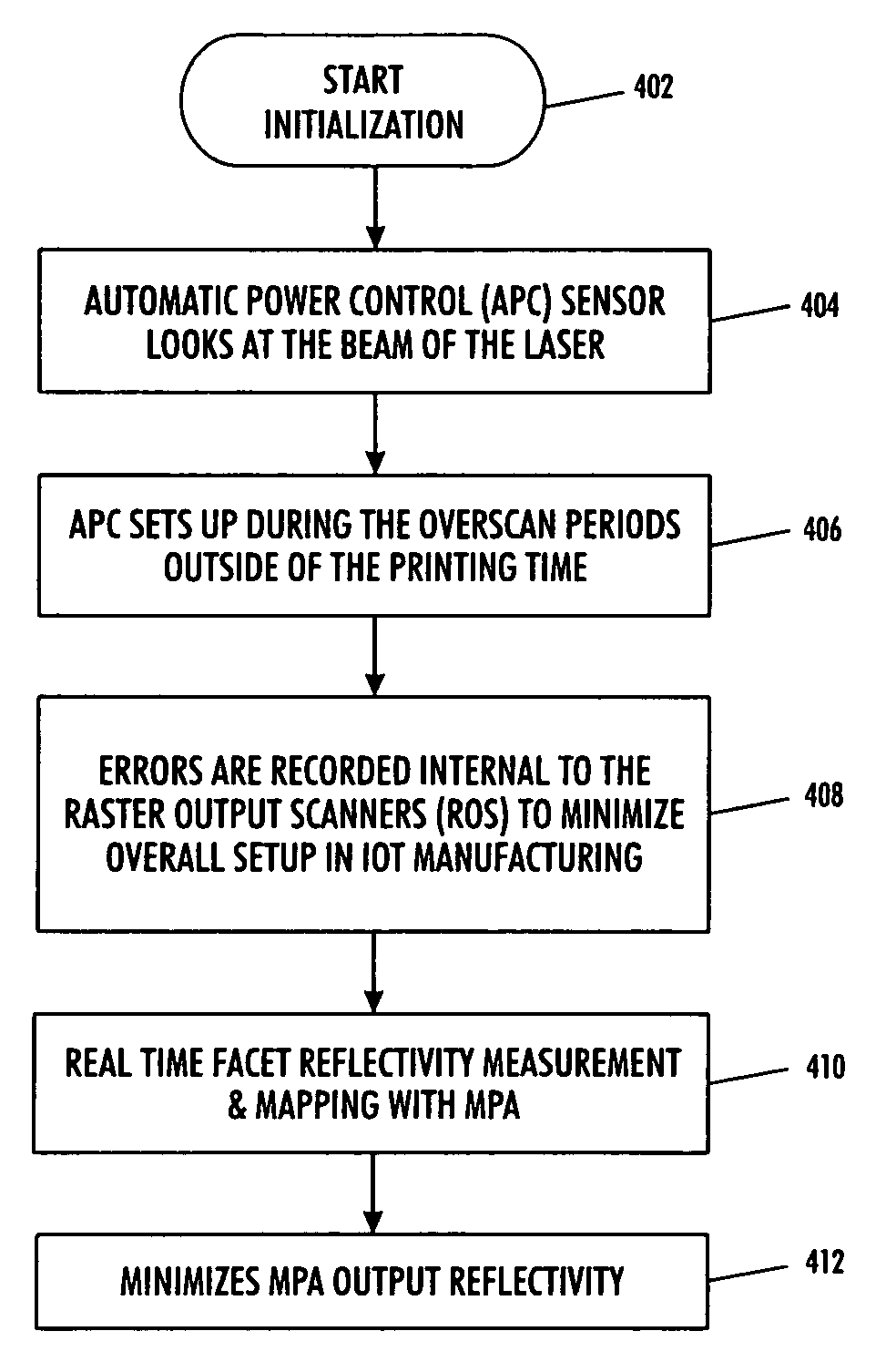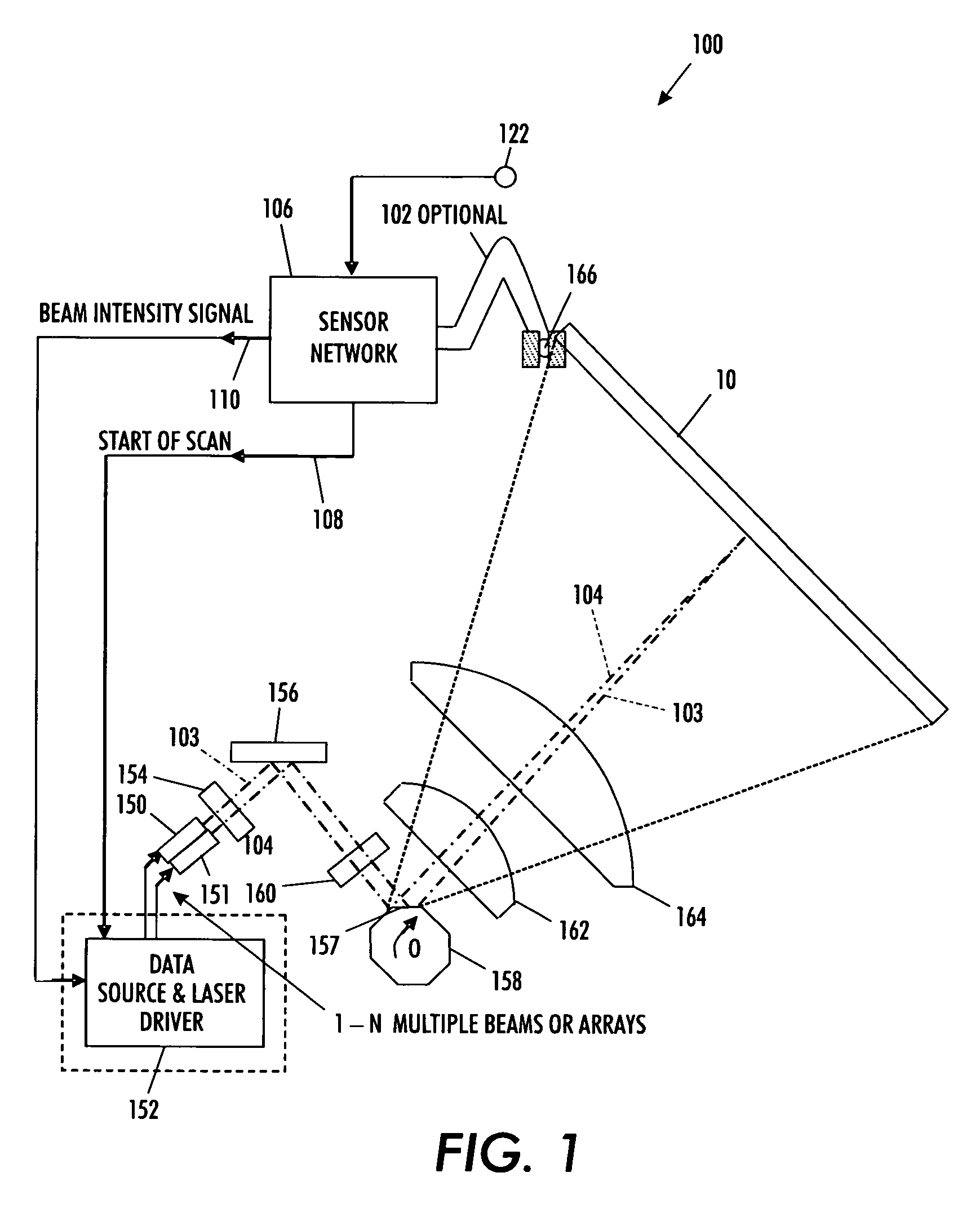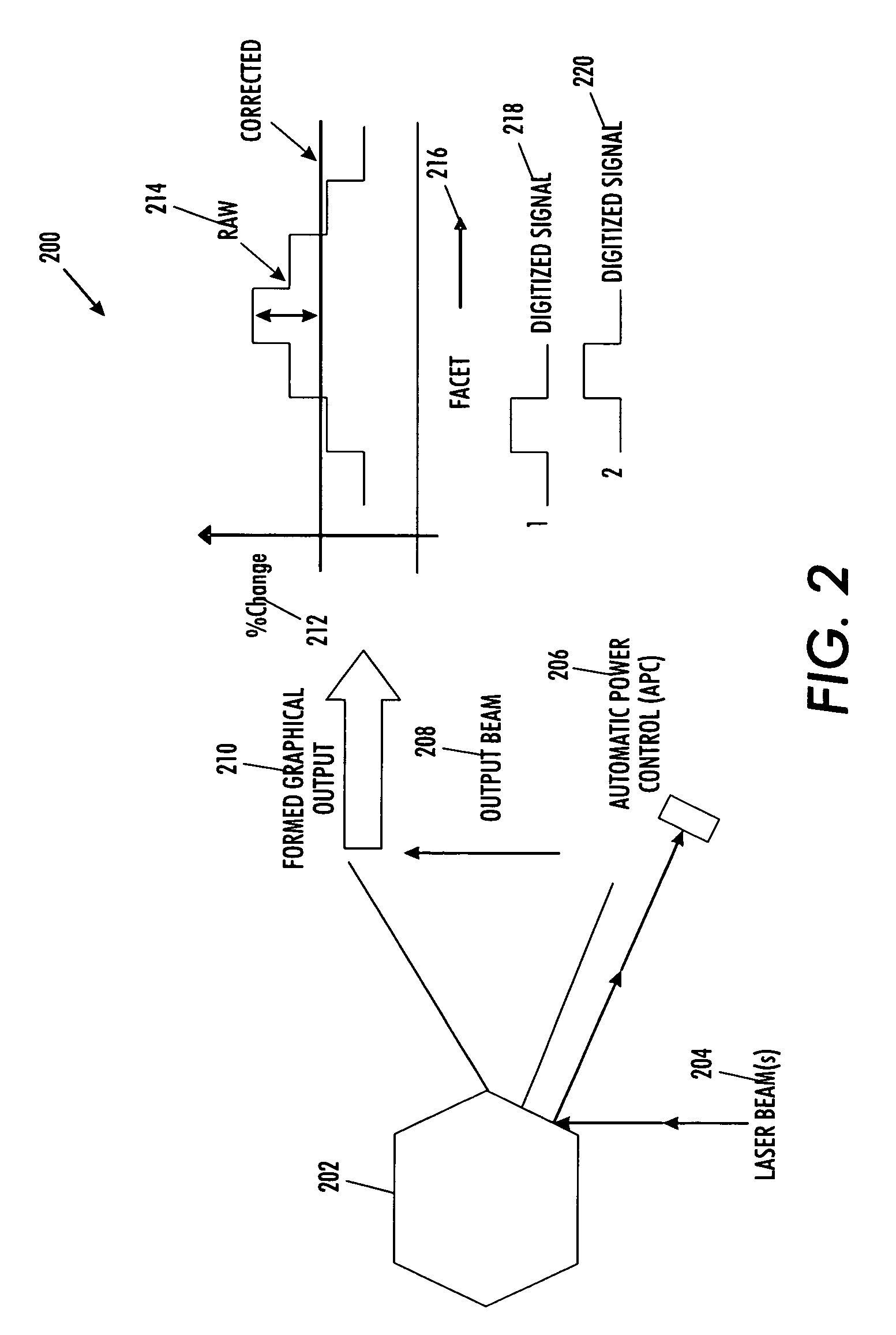Motor polygon assembly (MPA) facet reflectivity mapping
a technology of facet reflectivity and motor polygons, applied in the field of image data processing, can solve the problems of lack of effective control of output intensity and manufacturing errors, and achieve the effects of minimizing overall setup, minimizing mpa output reflectivity, and improving outpu
- Summary
- Abstract
- Description
- Claims
- Application Information
AI Technical Summary
Benefits of technology
Problems solved by technology
Method used
Image
Examples
Embodiment Construction
[0020]The particular values and configurations discussed in these non-limiting examples can be varied and are cited merely to illustrate at least one embodiment and are not intended to limit the scope thereof.
[0021]Referring to FIG. 2, illustrated is a perspective view 200 with the formed graphical analysis of the method adopted with motor polygon assembly (MPA) facet reflectivity mapping, which can be implemented in accordance with a preferred embodiment. A rotating polygon mirror 202 is kept adjacent to its facets, in which the laser beam is transmitted. The rotating polygon is configured with the help of the polygon motor driver and the response is generated to the automatic power control (APC) 206. The laser beam 204 is sent to the facets of the rotating polygon. The output beam 208 is configured and sent with the help of the automatic power control (APC). During the process the formed graphical output 210 is shown. The percentage of change 212 is analyzed in the vertical axis o...
PUM
 Login to View More
Login to View More Abstract
Description
Claims
Application Information
 Login to View More
Login to View More - R&D
- Intellectual Property
- Life Sciences
- Materials
- Tech Scout
- Unparalleled Data Quality
- Higher Quality Content
- 60% Fewer Hallucinations
Browse by: Latest US Patents, China's latest patents, Technical Efficacy Thesaurus, Application Domain, Technology Topic, Popular Technical Reports.
© 2025 PatSnap. All rights reserved.Legal|Privacy policy|Modern Slavery Act Transparency Statement|Sitemap|About US| Contact US: help@patsnap.com



